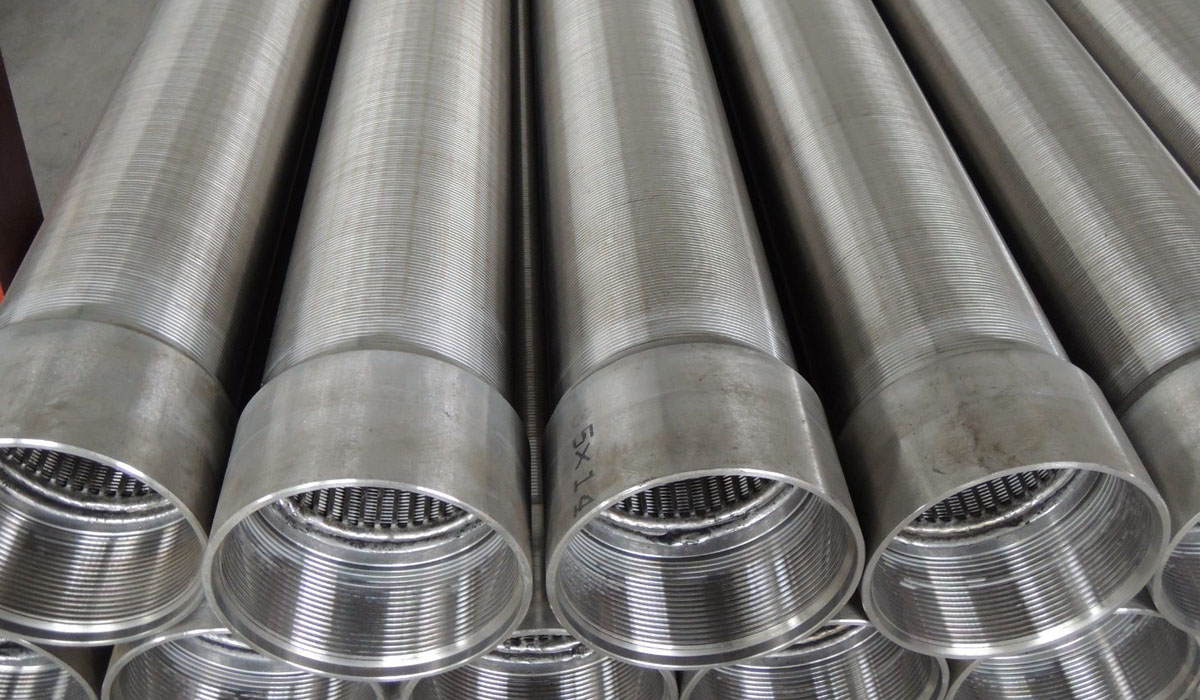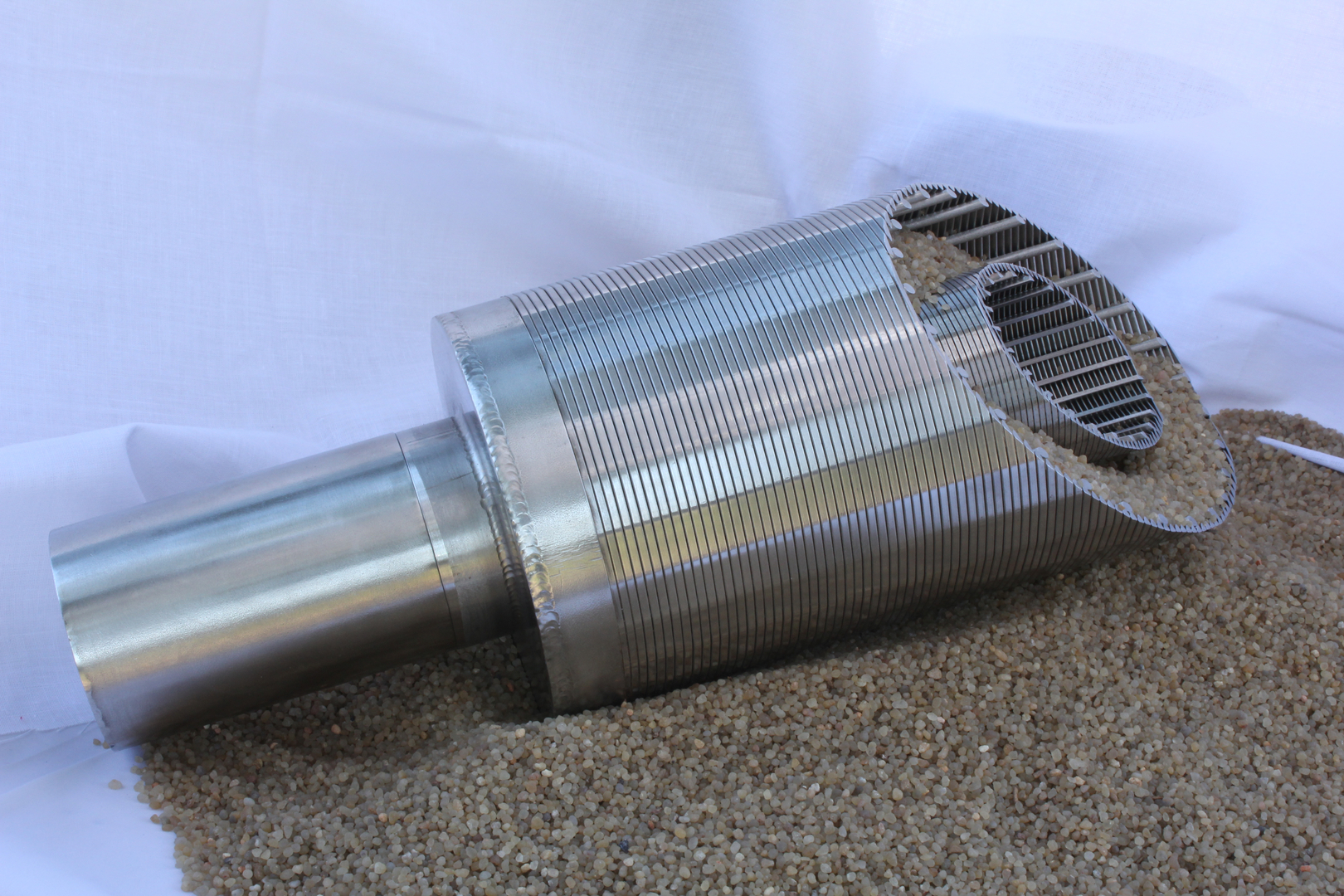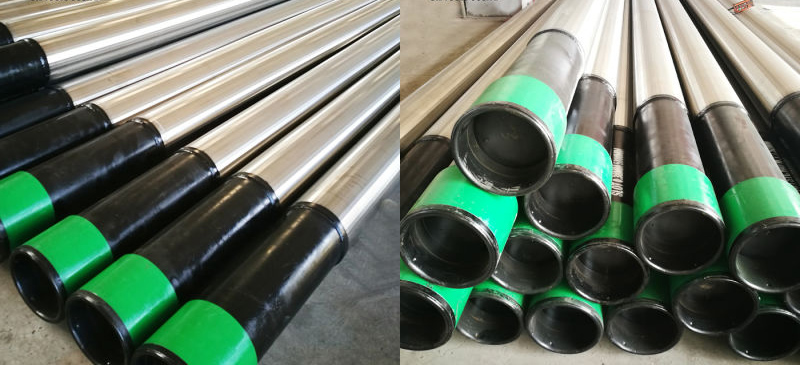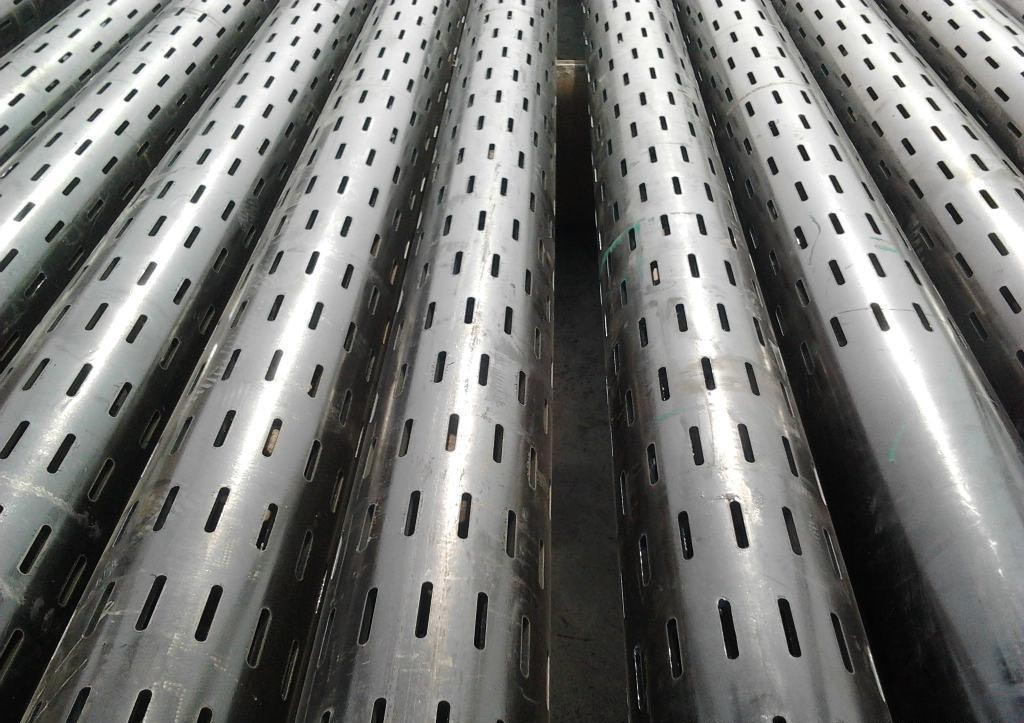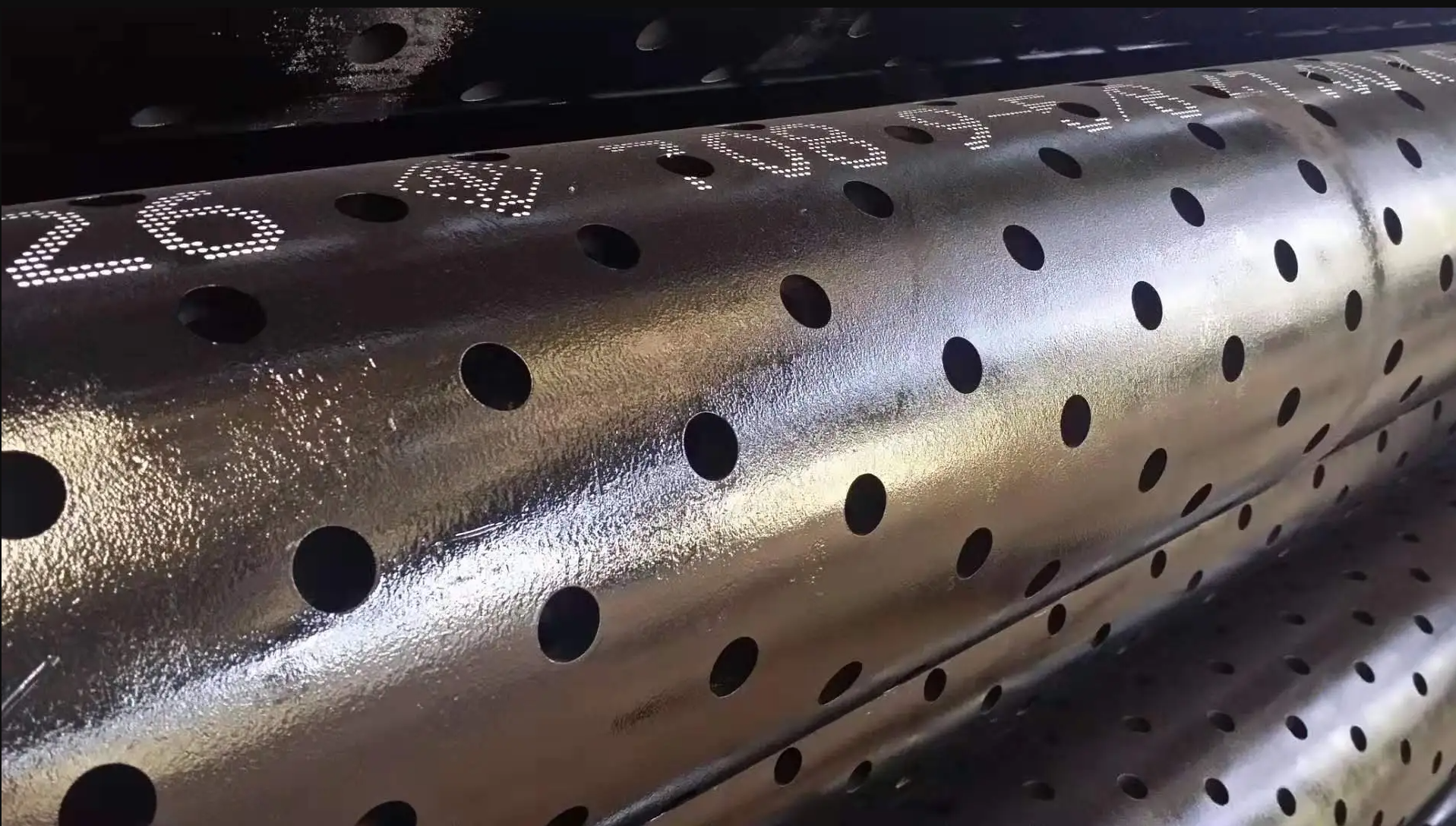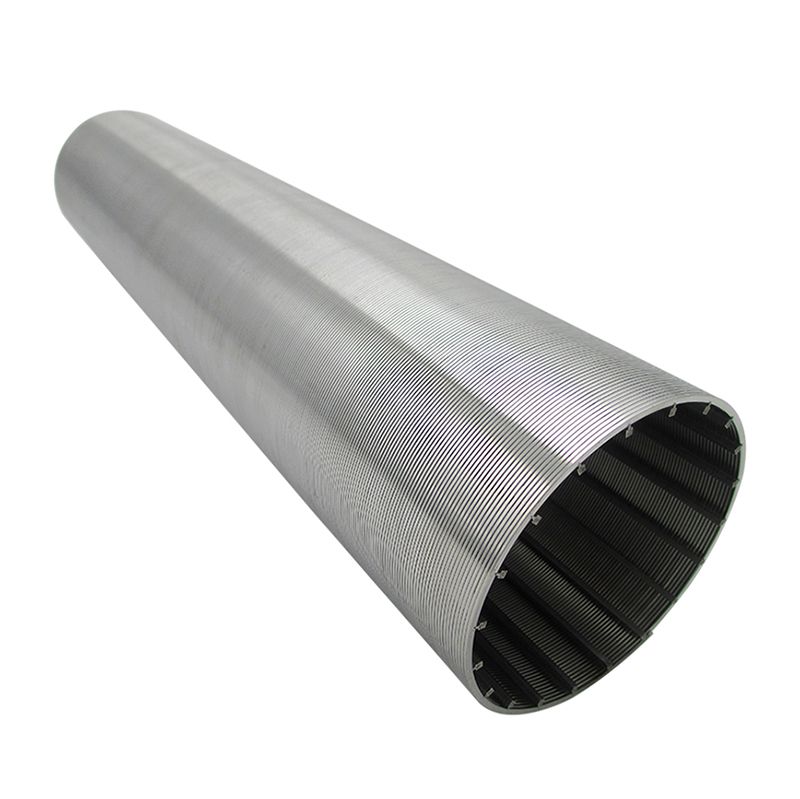PARAMETER
Geothermal Pipe based well screen specification:
| Nominal Diameter |
Pipe OD(mm) |
Weight lb/ftW.T[mm] |
Hole
size |
Holes
per foot |
Total Areaofholes in2/ft |
Screen
OD |
| 2-3/8 | 60 | 4.6[4.83] | 3/8 | 96 | 10.60 | 2.86 |
| 2-7/8 | 73 | 6.4[5.51] | 3/8 | 108 | 11.93 | 3.38 |
| 3-1/2 | 88.9 | 9.2[6.45] | 1/2 | 108 | 21.21 | 4.06 |
| 4 | 101.6 | 9.5[5.74] | 1/2 | 120 | 23.56 | 4.55 |
| 4-1/2 | 114.3 | 11.6[6.35] | 1/2 | 144 | 28.27 | 5.08 |
| 5 | 127 | 13[6.43] | 1/2 | 156 | 30.63 | 5.62 |
| 5-1/2 | 139.7 | 15.5[6.99] | 1/2 | 168 | 32.99 | 6.08 |
| 6-5/8 | 168.3 | 24[8.94] | 1/2 | 180 | 35.34 | 7.12 |
| 7 | 177.8 | 23[8.05] | 5/8 | 136 | 42.16 | 7.58 |
| 7-5/8 | 194 | 26.4[8.33] | 5/8 | 148 | 45.88 | 8.20 |
| 8-5/8 | 219 | 32[8.94] | 5/8 | 168 | 51.08 | 9.24 |
| 9-5/8 | 244.5 | 36[8.94] | 5/8 | 188 | 58.28 | 10.18 |
| 10-3/4 | 273 | 45.5[10.16] | 5/8 | 209 | 64.79 | 11.36 |
| 13-3/8 | 339.7 | 54.5[9.65] | 5/8 | 260 | 80.60 | 14.04 |
What is Geothermal Well Screen?
Geothermal well screens are an essential component of a geothermal well system. They are used to filter and protect the geothermal well from debris and other contaminants that can be harmful to the system. Sand Control Screens are designed to be durable and reliable, providing long-term protection for the well.
The geothermal well screen is a cylindrical tube made of a perforated metal or plastic material. The perforations are designed to allow water to flow freely through the screen while preventing the passage of large particles and other contaminants. The perforations can be either circular or rectangular in shape, depending on the size and shape of the geothermal well.
The size of the Sand Free Pipe Based Well Screen is determined by the size of the well and the type of geothermal system being used. The size of the screen will vary depending on the type of geothermal system being used, such as direct-use, heat pump, and thermal exchange. The size of the screen will also depend on the type of water being used in the geothermal system.
Geothermal Sand Free Pipe Based Well Screen are typically installed at the bottom of the well, below the water table. This allows the water to flow freely through the screen while preventing the passage of contaminants. The should be installed in a manner that allows for easy access and maintenance.
Geothermal Sand Free Pipe Based Well Screen can be used in both open and closed loop systems. In a closed loop system, the screen is used to prevent debris and other contaminants from entering the geothermal well. In an open loop system, the Sand Free Pipe Based Well Screen can be used to reduce the amount of sediment and other contaminants that enter the well.
Geothermal Pipe Based Screen are typically made of high-strength materials such as stainless steel, plastic, or fiberglass. The material must be able to withstand the pressure and temperature of the geothermal system. The material must also be able to resist corrosion and other damage caused by the high temperatures and pressures of the geothermal system.
Geothermal well screens are installed by drilling a hole in the bottom of the well and then inserting the screen. The hole should be the same size as the geothermal well screen so that it fits securely. Once the Sand Free Pipe Based Well Screen is in place, it should be secured with a set screw or other type of fastener.
Geothermal Sand Free Pipe Based Well Screen are designed to provide long-term protection for the geothermal well system. They are designed to be durable and reliable, providing years of protection for the well. Geothermal well screens are an essential component of any geothermal system and should be regularly inspected and maintained to ensure they are working properly.
What is Pipe Based Well Screen?
Pipe based well screen, sometimes referred to as a continuous slot screen, is a type of well screen designed to be used in water wells and other water sources. It is constructed from a length of perforated pipe with a continuous slot cut along the length of the pipe. The slot can vary in size from 0.2 mm to 3 mm and can be manufactured in a variety of materials such as steel, stainless steel, PVC and other plastic materials.
Pipe based well screens are designed to allow only certain particles to pass through the slot while preventing larger particles from entering the well. In a typical application, the pipe based well screen will be installed in the well and then connected to a pump. Water is then drawn from the well and pumped through the pipe and out the other side. The slot size of the pipe will determine what size particles are allowed to pass through, while larger particles are unable to pass through the slot and will be trapped inside the pipe.
The primary benefit of pipe based well screens is that they are able to provide a much higher level of filtration than other types of well screens. The continuous slot allows for a much finer level of filtration, allowing only the desired particles to pass through while preventing larger particles from entering the well. This helps to ensure that only clean, safe water is entering the well and can help to prevent contamination and other issues.
Pipe based well screens can also be designed to provide additional protection against clogging and other issues. For example, some pipe based well screens are designed with a mesh guard that helps to prevent debris from entering the well. This mesh guard can be made from a variety of materials and can be designed to be removable for easy cleaning and maintenance.
Pipe based well screens can be designed for a variety of applications and can be customized to meet specific needs. For example, some pipe based well screens are designed with a variety of slot sizes to provide more precise filtration. In addition, the pipe can be manufactured in various materials to provide better corrosion and wear resistance.
Installing a pipe based well screen requires a certain level of skill and experience. The pipe must be measured accurately to ensure that the slot size is correct. In addition, the pipe must be connected to the pump properly and the connections must be sealed to prevent leaks.
Overall, pipe based well screens are an effective way to provide a high level of filtration in water wells and other water sources. They are designed to allow only certain particles to pass through the slot while preventing larger particles from entering the well. In addition, the pipe can be designed with a variety of slot sizes and materials to provide more precise filtration and additional protection against clogging and other issues. Installing a pipe based well screen requires skill and experience, but when done correctly, it can provide many benefits.

